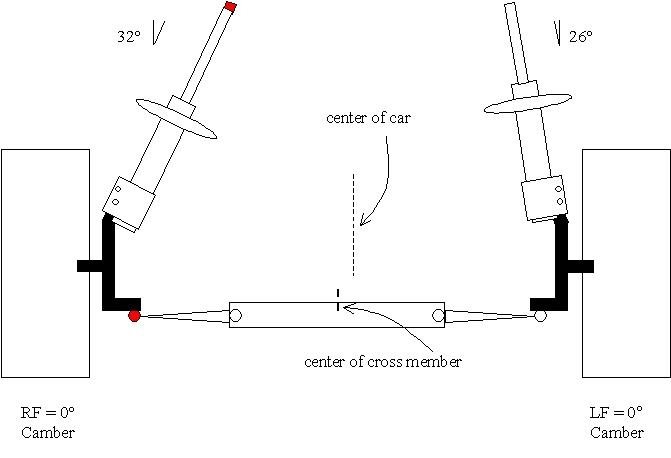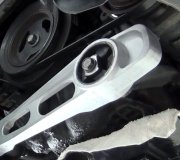The most likely cause is the connection between the steering coupler and rack and pinion assembly. Also, depending on how far the cross member has to be lowered, you might need to remove the three smaller nuts holding the struts to the inner fender, right by the hood hinges. Watch that the fuel lines do not get stretched or torn. There is also an engine mount that limits how much the engine can rock forward and backward. On a lot of GM models, that is on top, just to the right of the radiator. You may need to remove one of the two bolts.
I fear you may have already overlooked a common problem that only occurs on GM front-wheel-drive cars. Their cross members do not have any means of indexing them to the body. On all other brands, the cross member is either welded in place, or the mounting bolts have large shoulders that force it to go back to its original orientation. You need to mark the bolt locations before you remove them, but if you did not do that, all is not lost.
What will happen if you reinstall the cross member slightly to the left of where it was, is both lower ball joints will be moved to the left, causing both front tires to tilt to the right on top. That is one of the three main alignment angles caused "camber". Camber has a huge affect on tire wear, and tires want to pull in the direction they are leaning. You will have a pull to the right when you let go of the steering wheel, but there is more to the story.
You will take the car in for an alignment, and the mechanic will see the unequal camber on the two sides and want to correct that. While that will make the numbers look good on the computer, it does not address a more pressing underlying problem. Moving the cross member to one side moved the lower attaching points of the front struts. The upper mounts did not move, so the angle of the struts changed. One is standing up straighter and one is leaning more. That angle is called "steering axis inclination", SAI. If that is overlooked and just camber is set to specs, you will have the most miserable-handling car you ever experienced. With every tiny bump in the road, the car will dart unexpectedly in various directions. You will become worn out just driving it to the shop.
Some more-experienced mechanics will know to check SAI right away when they see camber off equally on both sides, and some will quiz their customers as to why they think their car needs an alignment. What you should do to save the mechanic a lot of time is just explain that the cross member was removed. It can be slid back to where it needs to be by just loosening the four bolts, then prying it with a small pry bar. SAI is measured automatically by all alignment computers, but we often do not bother to look at the numbers because there is no need to unless we're looking for crash damage. Also, there is no spec given for SAI. A typical value is between 28 to 32 degrees, but all that is important is it is the same on both sides, within 0.2 degrees. Once that is readjusted, it is real likely camber will again be equal on both sides.
Here is a nifty drawing that shows unequal SAI after camber has been set by an inexperienced mechanic:
Image (Click to make bigger)
Wednesday, August 15th, 2018 AT 9:47 PM

